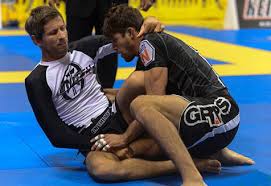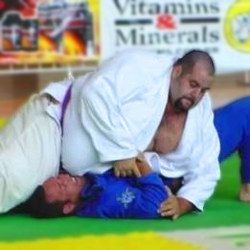A lot of people in the jiu-jitsu community that want to push the self-defense aspect of our art like to quote the legendary Grandmaster, Carlson Gracie who once famously said “if you take a black belt, and punch him, he becomes a brown belt”. It is a good pithy phrase to get someone to consider that just because you can roll and spar does not automatically translate completely over to self-defense.
And it is true on a very, very superficial level. The problem is that people who like to quote this phrase forget to add the rest of what Carlson Gracie said. What he then said was that if had that same black belt spend a little time dealing with strikes, he stayed at a black belt level when he encountered them for real. That is a far, far cry from some damning admonition to not do competition jiu-jitsu. Carlson was a huge proponent of “sport” jiu-jitsu, and his team was considered the top one in the late 80’s and into the late 90’s. He loved it, and thought it was a vital component to being truly good at jiu-jitsu.
What he was trying to remind people was that you needed to have some specificity of training that you went through to make sure you could handle anything that came your way. If you never ever worked against the authentic energy of someone punching you, the sheer shock of it happening could derail your response. The first time you get a sense of what it feels like to get hit should not be when your life in on the line. The same goes for weapons. It is not a hard skill to build in the ability to actively monitor for someone trying to deploy a handgun or knife, unless the very concept has never crossed your consciousness until the moment when you are looking down the barrel of a pistol.
At some point, you need to work the concept in a physical manner until you build some familiarity with it. That does not mean you have to spend years only working grappling against weapons or strikes. The vast majority of our time can actually be spent in a healthy, fun, safe, and productive way by just doing our normal training that we generally do in the academy. Once you have got a real grasp on it (perhaps by doing a training course like Craig Douglas’ ECQC) just carve out a small percentage – say one hour for every 20-30 hours of “normal” training. This is enough to maintain proficiency and to keep the groove greased. This is especially true if you take into consideration all the little things I have already written about in this series. Maybe once a month, get together with a handful of training partners on a Sunday and do two or three hours of full on training with weapons, strikes, and even multiple opponents involved. The other two to three times a week can be left to your regular BJJ schedule.
Here is an example of working weapons concepts directly into a standard BJJ paradigm:
And just as I brought up in the article on the dangers of hyperfocusing, jiu-jitsu is not the only art that is guilty of not doing enough specific training. In actuality, the gun community is far worse because there is rarely any oppositional resistance of any kind. If we need to make sure our grappling has some direct experiential connection with weapons and strikes, shouldn’t our weapons work have some of the same with regards to the oppositional part?



